23 Hidden Natural Wonders in the U.S.
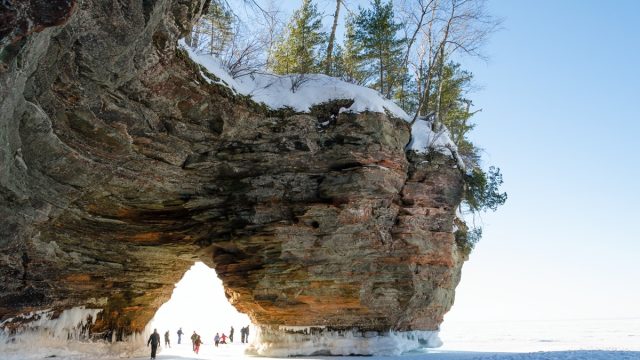
From Japan’s Mount Fuji and Australia’s Great Barrier Reef to South Africa’s Table Mountain and Israel’s Dead Sea, the world is absolutely brimming with au naturel attractions. Of course, this is no surprise to anyone, but what might be is that you don’t have to book an expensive flight to see some of the most intriguing places. Whether you’re interested in singing sand dunes, flame-lit waterfalls, or prehistoric swamps, we’ve found 23 off-the-beaten-path natural wonders in the U.S. that will blow your mind.
1
Bisti Badlands, New Mexico
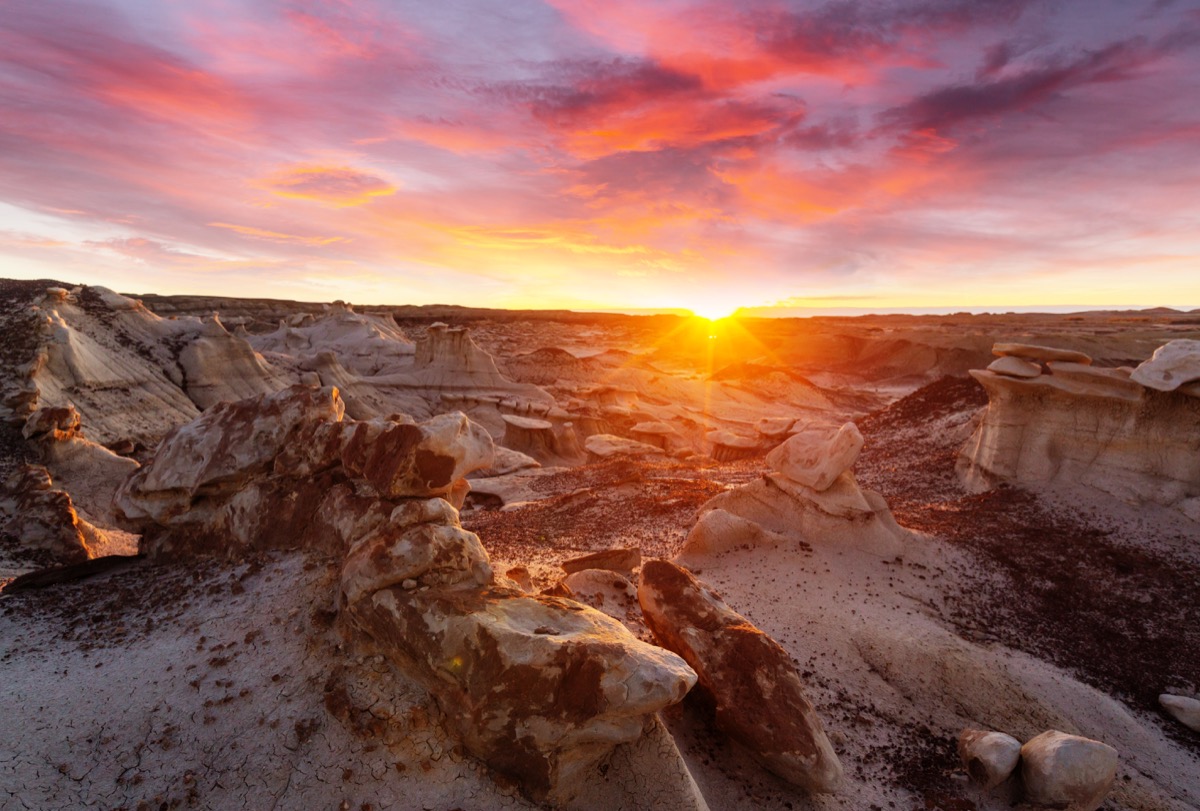
Hoodoos, prehistoric swamps, desert spires—New Mexico’s Bisti Badlands has all this and more. The 45,000-acre swath, which stretches out across the Four Corners region, may now be arid desert, but it was once—65 million years ago—an inland coastal area home to early relatives of the Tyrannosaurus rex. To see what the best park in your state is, check out This Is the Best National Park in Each State.
2
Fern Canyon, California
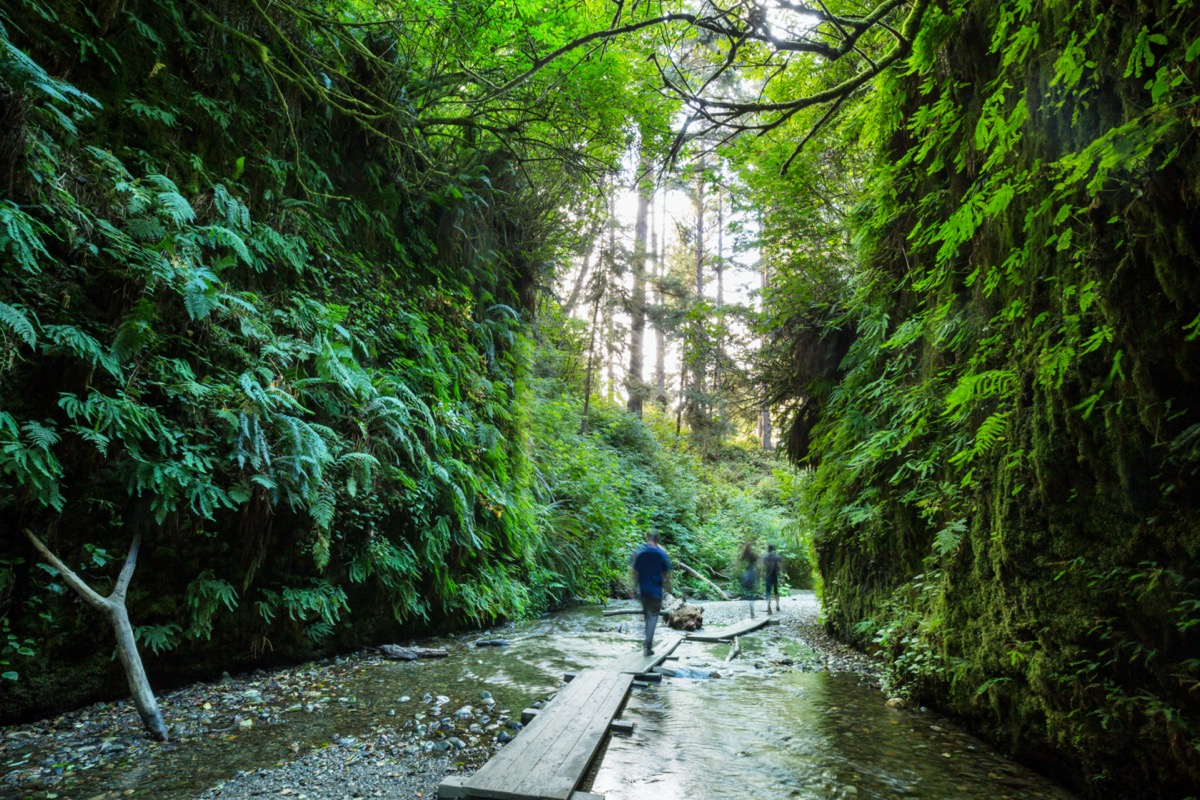
Fern Canyon is located a few miles within Prairie Creek Redwoods State Park. If you’ve never been there but it looks oddly familiar, perhaps you’ve seen the lush, fern-covered canyon in Jurassic Park 2: The Lost World? The verdant one-mile trail forms a natural maze with walls that grow closer and taller the farther you walk. The leafy environs shade a number of amphibians, as well, including the Pacific giant salamander—so keep your eye peeled.
3
Craters of the Moon National Monument & Preserve, Idaho
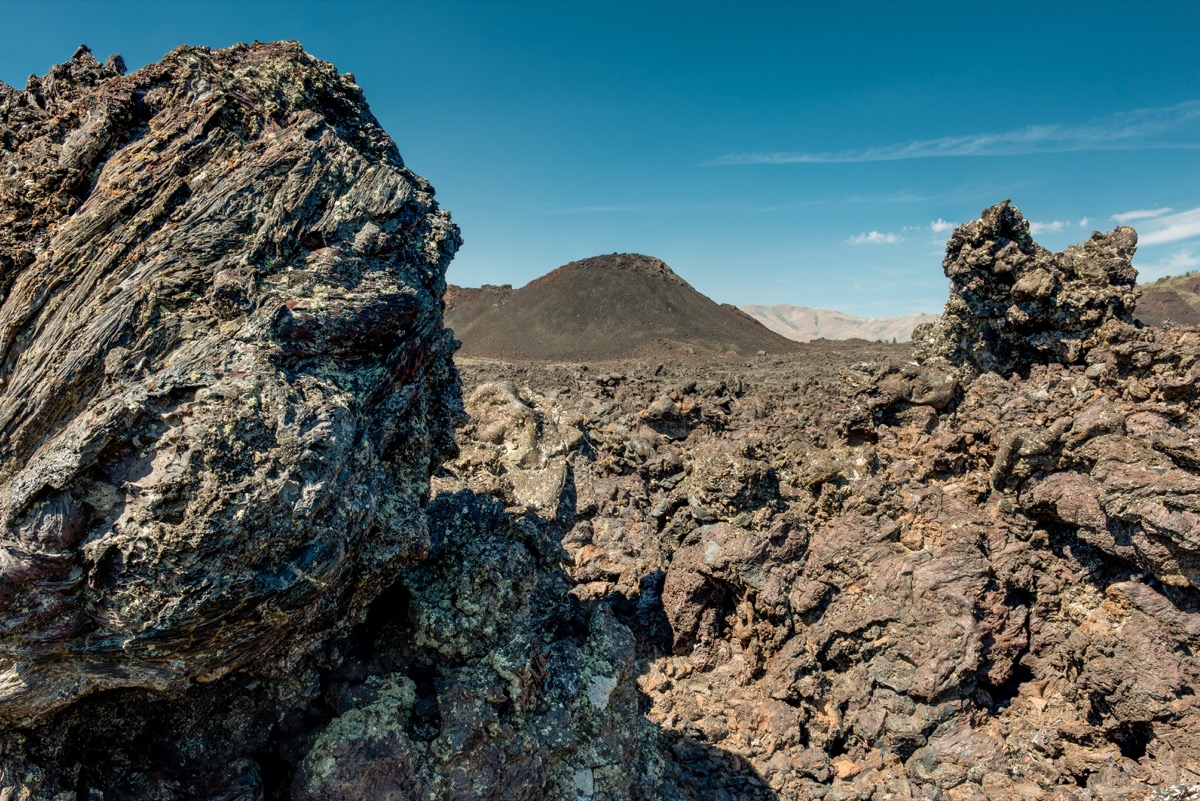
Equidistance between Boise and Yellowstone National Park lies Craters of the Moon—a 1,117-mile preserve that encompasses three major lava fields. The Rhode Island-sized area formed between 15,000 to 20,000 years ago as lava erupted from the Great Rift, and today it’s home to the largest-known open rift crack in the world. For more beautiful locations in America, check out the 30 Places So Surreal You Won’t Believe They’re in the U.S.
4
Pictured Rocks National Lakeshore, Michigan
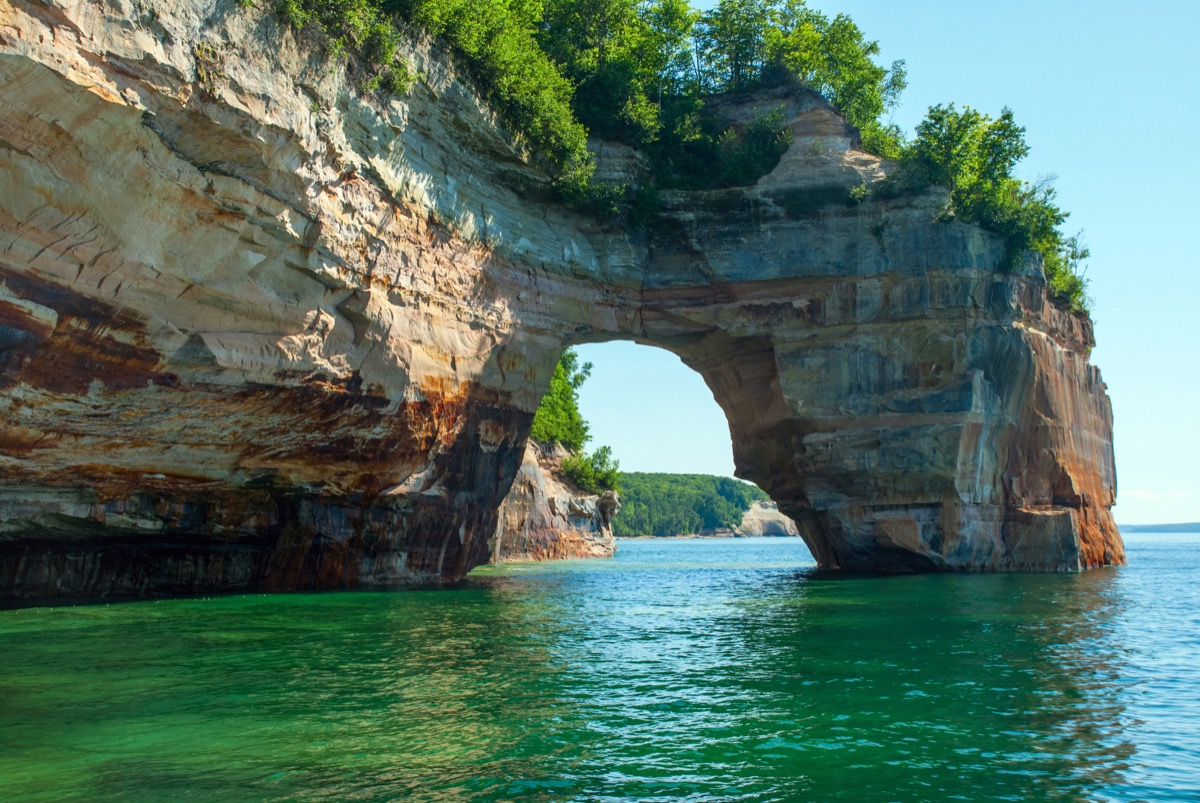
Ireland has the Cliffs of Moher and England has the Cliffs of Dover, but what does Michigan have? Well, Pictured Rocks National Lakeshore, of course! The Upper Peninsula park includes 15 miles of mineral-stained cliffs, which borrow their color from iron, copper, manganese, and limonite deposits. At their tallest, the cliffs tower 200 feet about Lake Superior, making for a pretty incredible kayaking backdrop.
5
Kelso Dunes, California
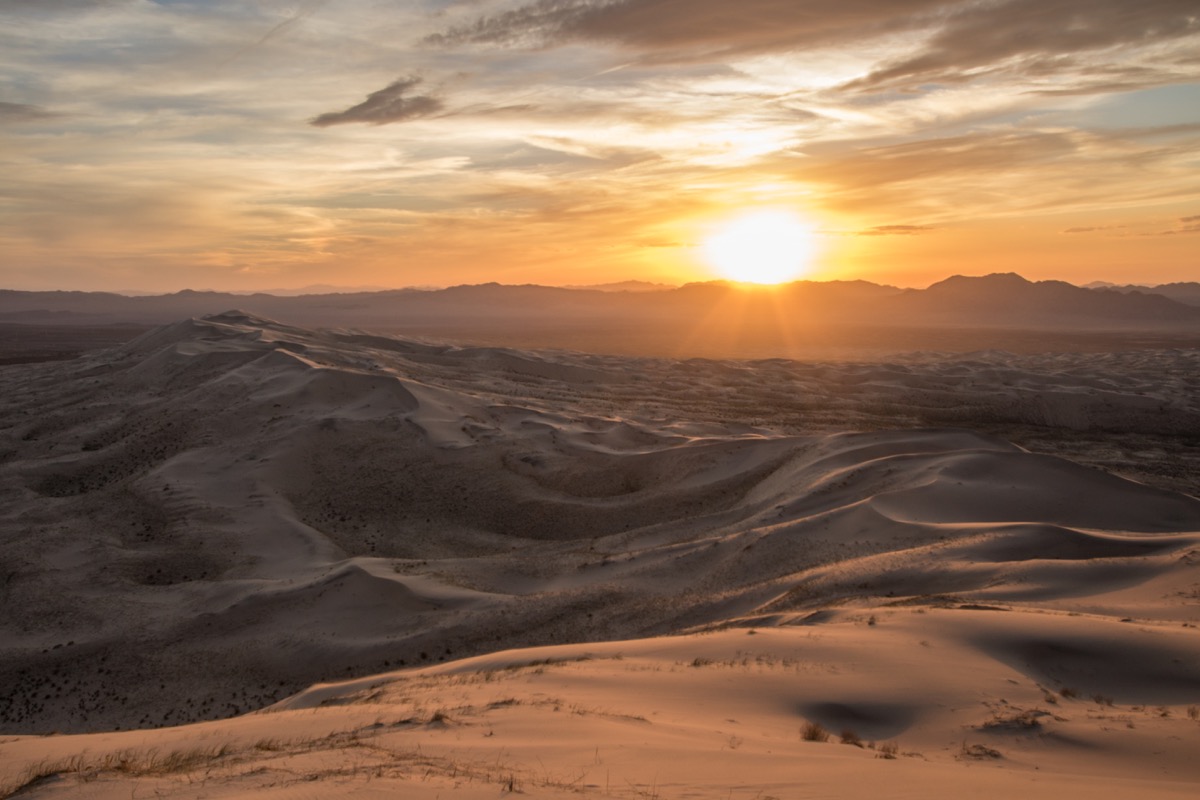
The Mojave Desert is no stranger to sand dunes, but the Kelso Dunes aren’t your average find. The 45-mile quartz sand deposit includes five distinct dunes—each the result of a specific period of climate change over the last 25,000 years. As wind moves through the area’s vegetation, the sand “sings,” letting off a low-frequency rumble that still has scientists scratching their heads as to why.
6
Eternal Flame Falls, New York
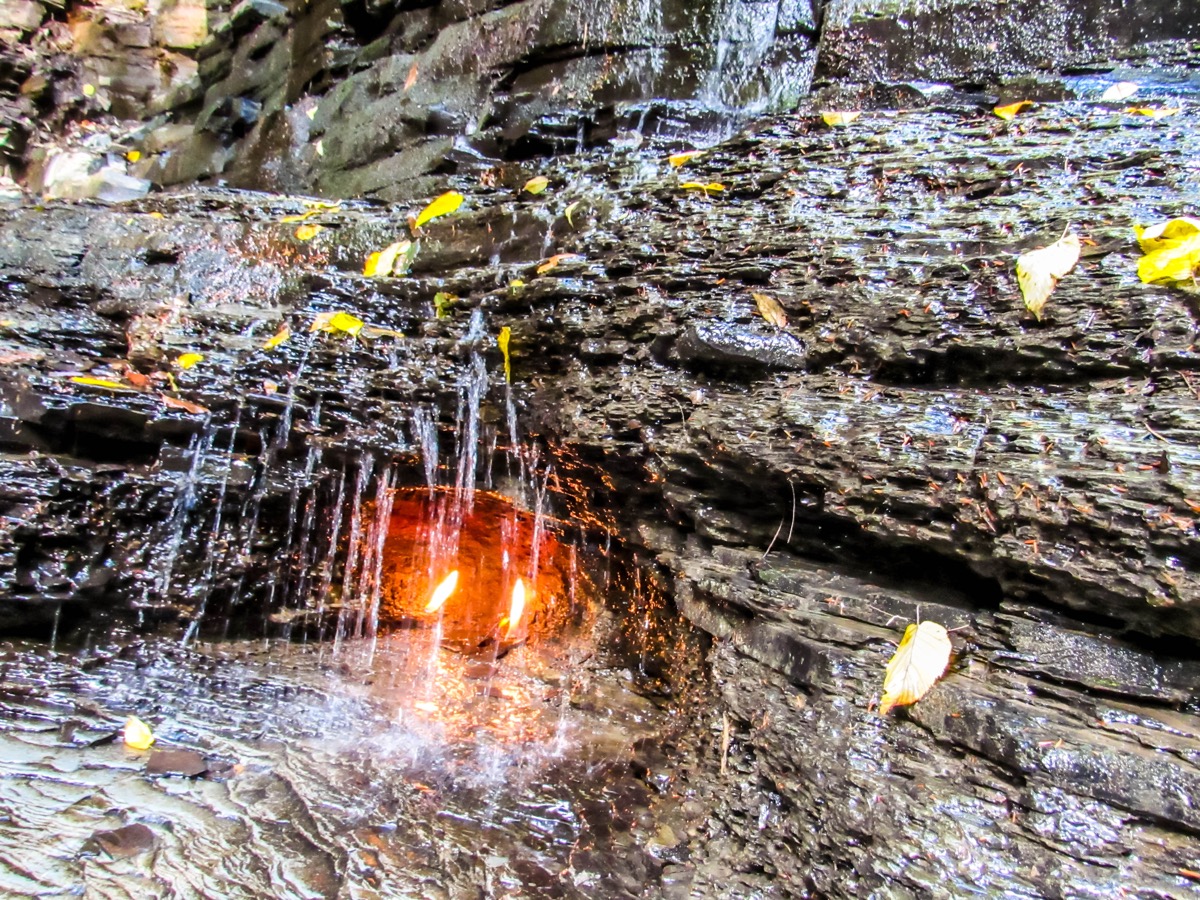
Of all the elements, water and fire usually don’t get along the best, but at New York’s Eternal Flame Falls? Well, it’s a different story. Tucked into the Shale Creek Preserve about 30 minutes south of Buffalo, the 30-foot cascade harbors a small, natural gas-emitting grotto that fuels an “eternal” eight-inch flame. For little-known travel spots, check out the 33 Utterly Amazing Travel Destinations in the U.S. You’ve Never Heard Of.
7
Palouse Falls, Washington
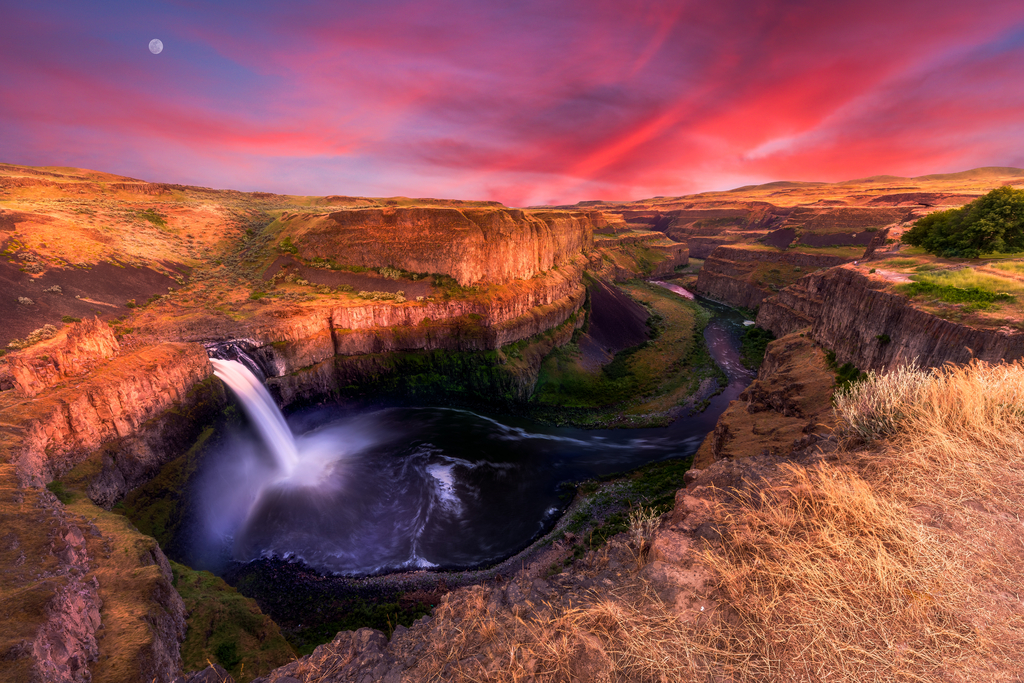
Coursing water is no match for stone—just ask Washington’s Palouse Falls. The cascade carved out its spot some 13,000 years ago and is one of the last active waterfalls on the Ice Age flood path. At sunset, the dancing shadows make the 200-foot drop even more enchanting.
8
Neskowin Ghost Forest, Oregon
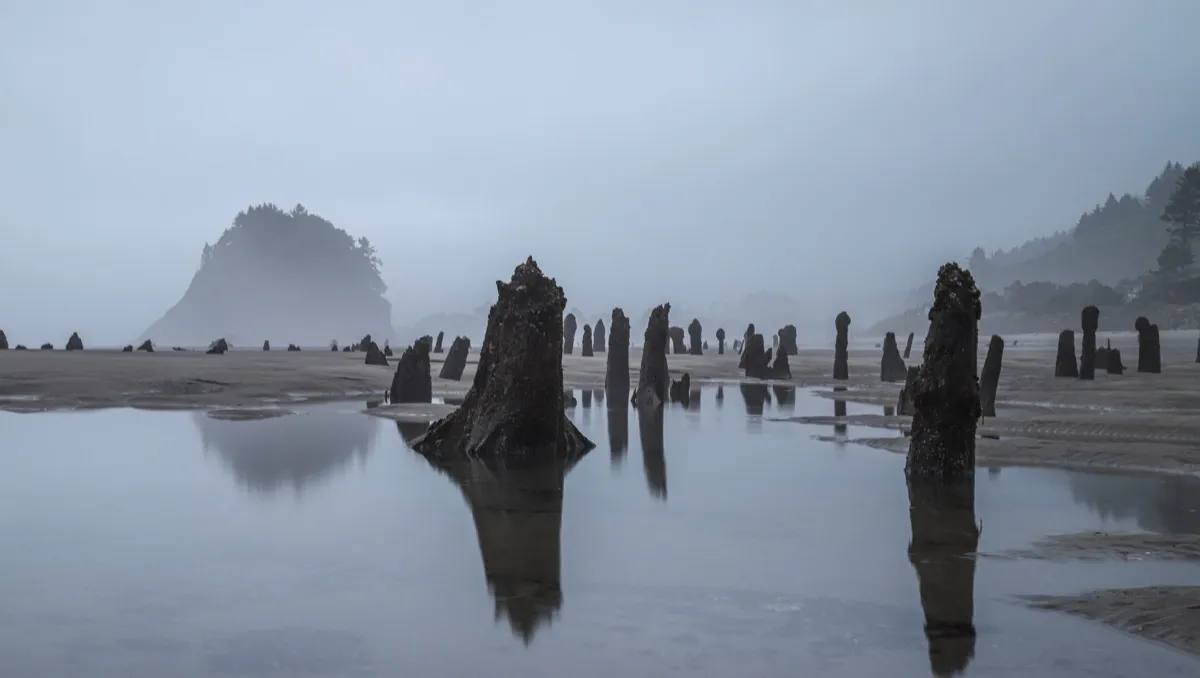
The Pacific Northwest knows a thing or two about natural wonders, but spots like Cannon Beach and Crater Lake are far from secret. If you’re looking for a quieter place, consider the Neskowin Ghost Forest. The ancient spruce forest was once a 200-foot-tall canopy, but after being decimated by a tsunami in 1997, it’s now nothing more than a hundred or so barnacle-covered stumps.
9
The Basin, New Hampshire
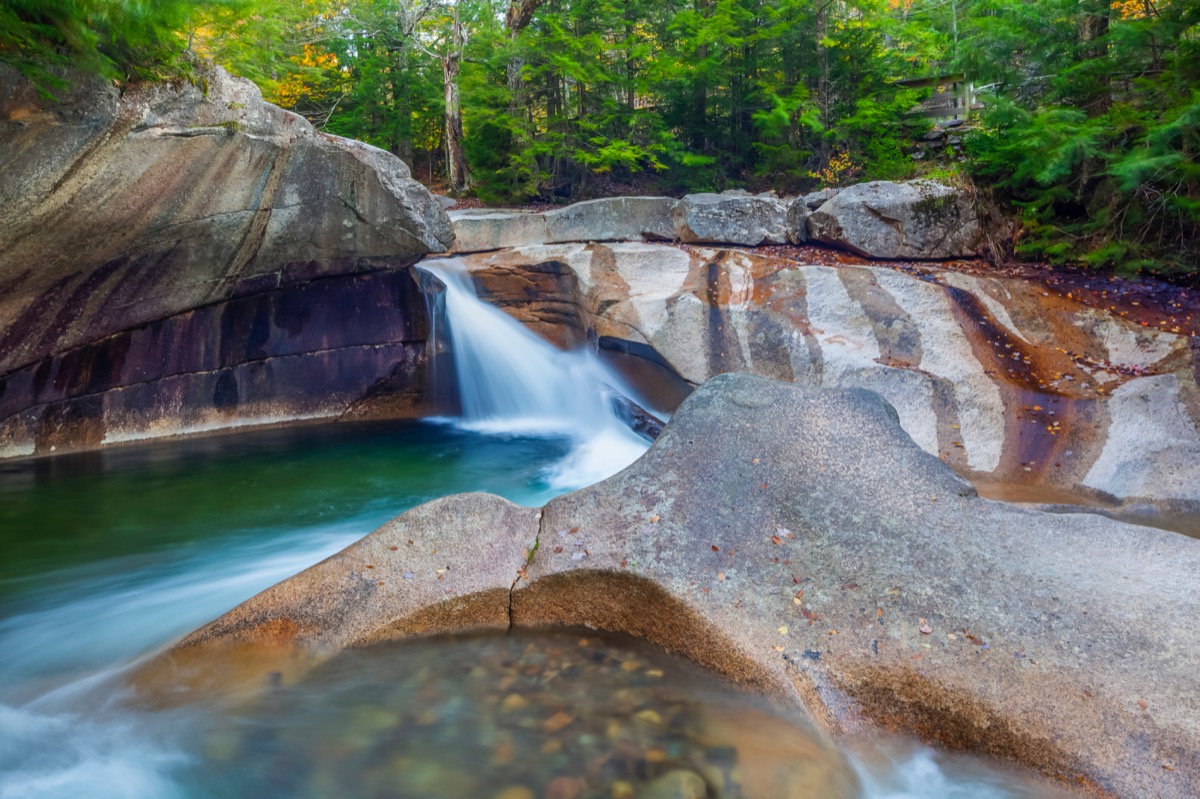
Potholes usually aren’t sought-after attractions, but then again, most aren’t 20 feet in diameter or lauded by Henry David Thoreau as “the most remarkable curiosity of its kind in New England.” The glacially formed Basin—which churns icy mountain water all year round in New Hampshire’s Franconia Notch State Park—is believed to have been the result of the North American ice sheet melting some 15,000 years ago.
10
Bonneville Salt Flats, Utah
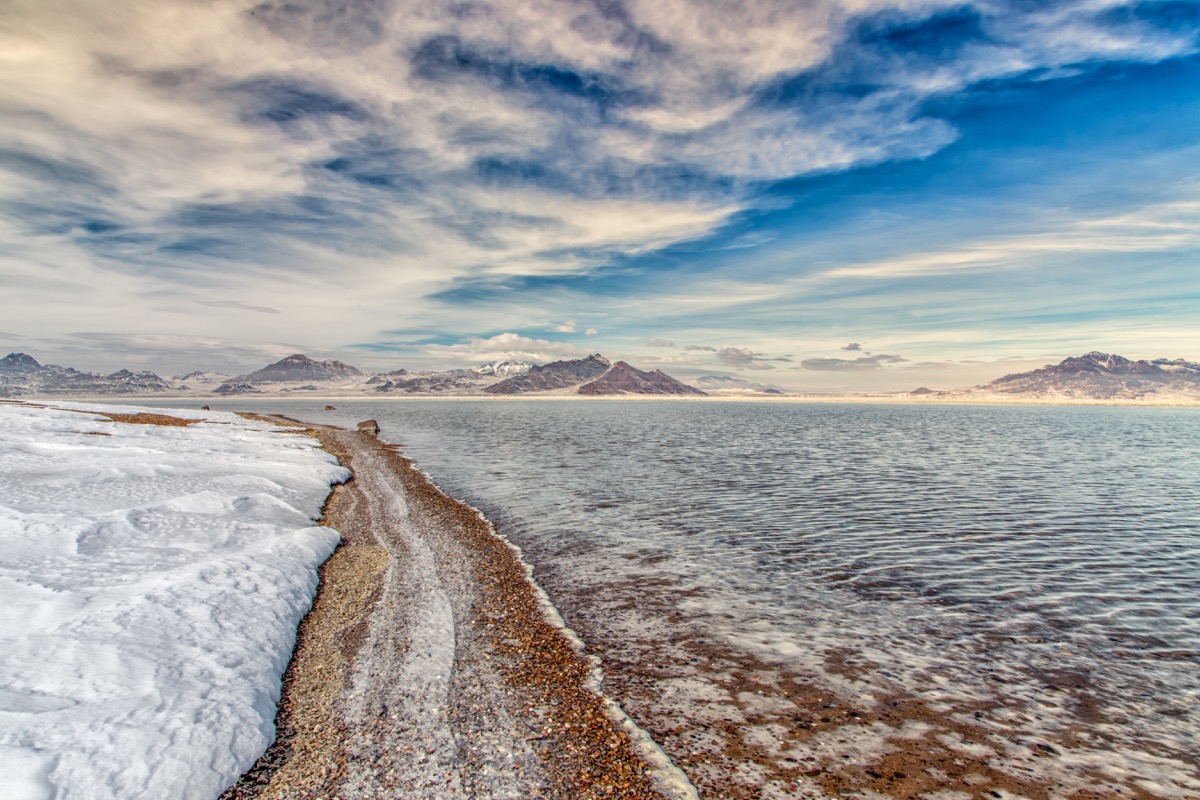
Turns out you don’t have to book a flight to Bolivia to see some of the world’s most mesmerizing salt flats—instead, consider what Utah has to offer. Formed at the end of the last ice age, the Bonneville Salt Flats stretch for 30,000 acres along the Utah-Nevada border. What looks like a snow-covered lake is actually crusty salt that’s nearly five feet deep in the center.
11
Ruby Falls, Tennessee
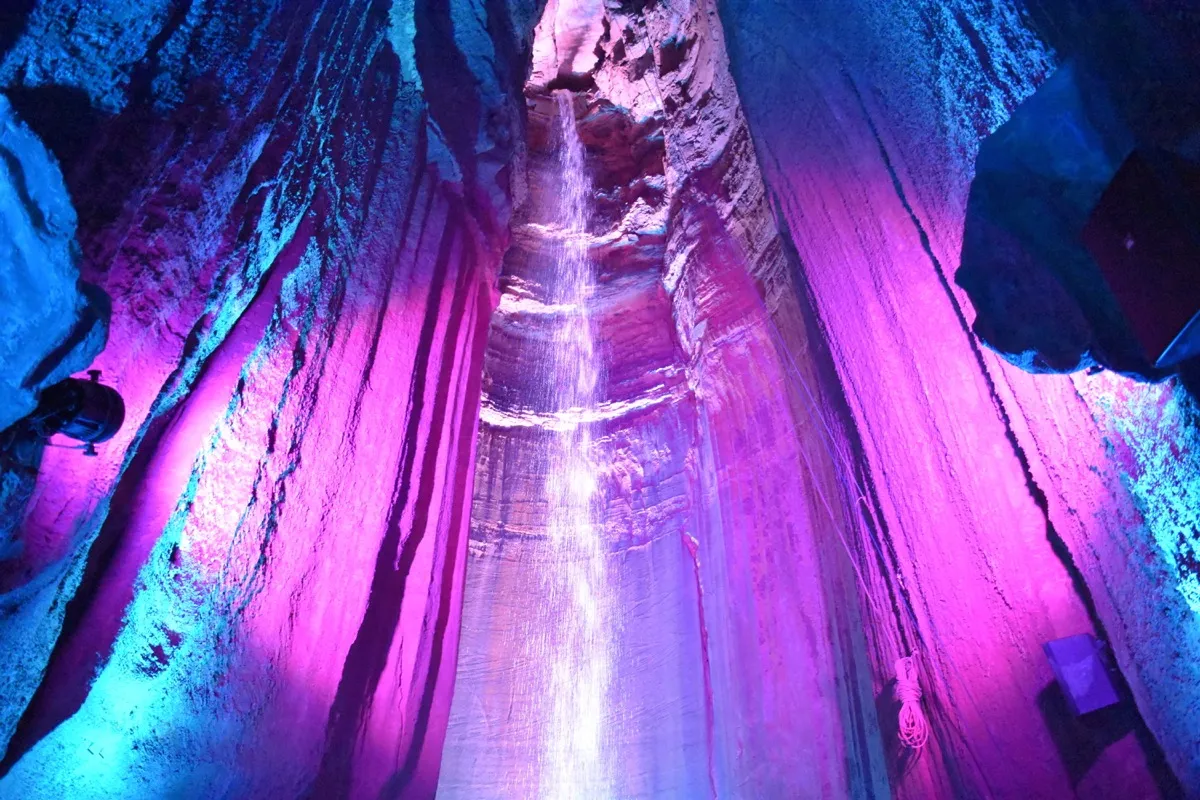
Deep within the 2,388-foot summit of Lookout Mountain lies Ruby Falls—the United States’ tallest and deepest (open-to-the-public) underground waterfall. The 145-foot cascade, just minutes from downtown Chattanooga, was discovered in 1928 and delivers sweeping views of the Tennessee Valley.
12
Mendenhall Glacier, Alaska

Wander 12 miles north of downtown Juneau, and you’ll stumble across Alaska’s stunning Mendenhall Glacier. The 13-mile-long river of ice is part of the Juneau Ice Field, a 1,500-square-mile area that’s home to more than 140 glaciers. The natural attraction is threatened by climate change, so see it (and reflections of the striking Coast Mountains) while you still can.
13
Turnip Rock, Michigan
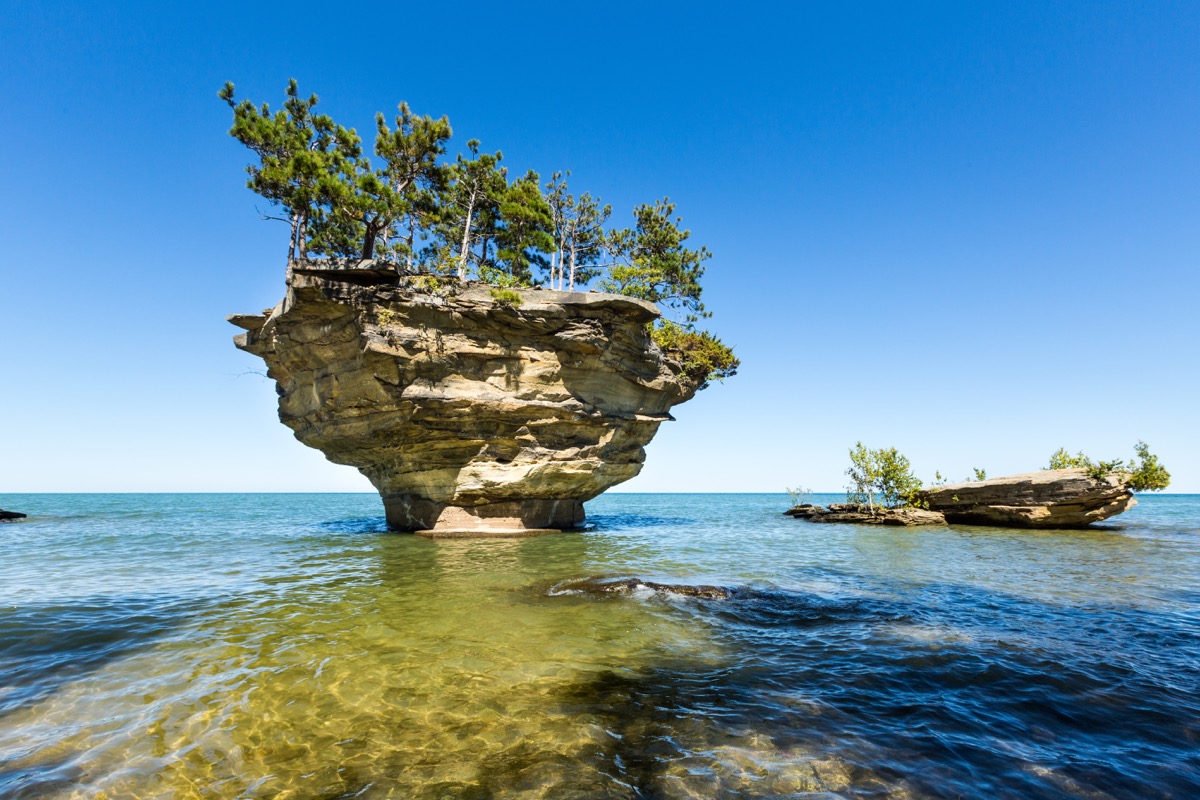
Since it’s accessible only by a 3.5-mile kayak ride out into Lake Huron, few people know about Turnip Rock. The small, wave-worn stacked rock separated from mainland Michigan (up by the tip of the state’s “thumb”) in prehistoric times and is now home to a handful of 20-foot trees and squirrels, but not much else. Since it’s privately owned, visitors can stop for a photo but there’s no disembarking—so it never gets too crowded.
14
Crystal River National Wildlife Refuge, Florida
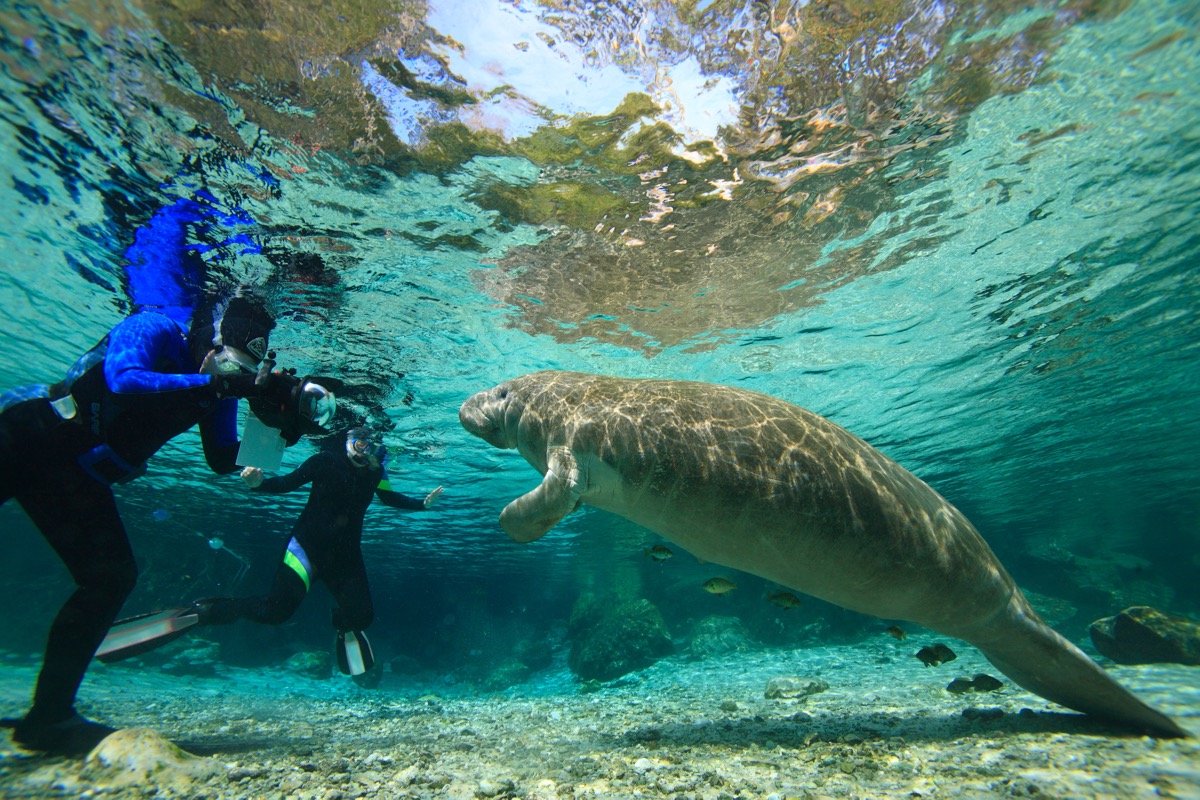
Florida’s Crystal River National Wildlife Refuge encompasses 20 islands in and around Kings Bay. The 80-acre collection of springs pumps out more than 600 million gallons of freshwater every day, but that alone isn’t what draws visitors. The refuge was specifically designed to protect the gentle, slow-moving West Indian manatee as the 72-degree waters make it their ideal habitat.
15
Glass Beach, California
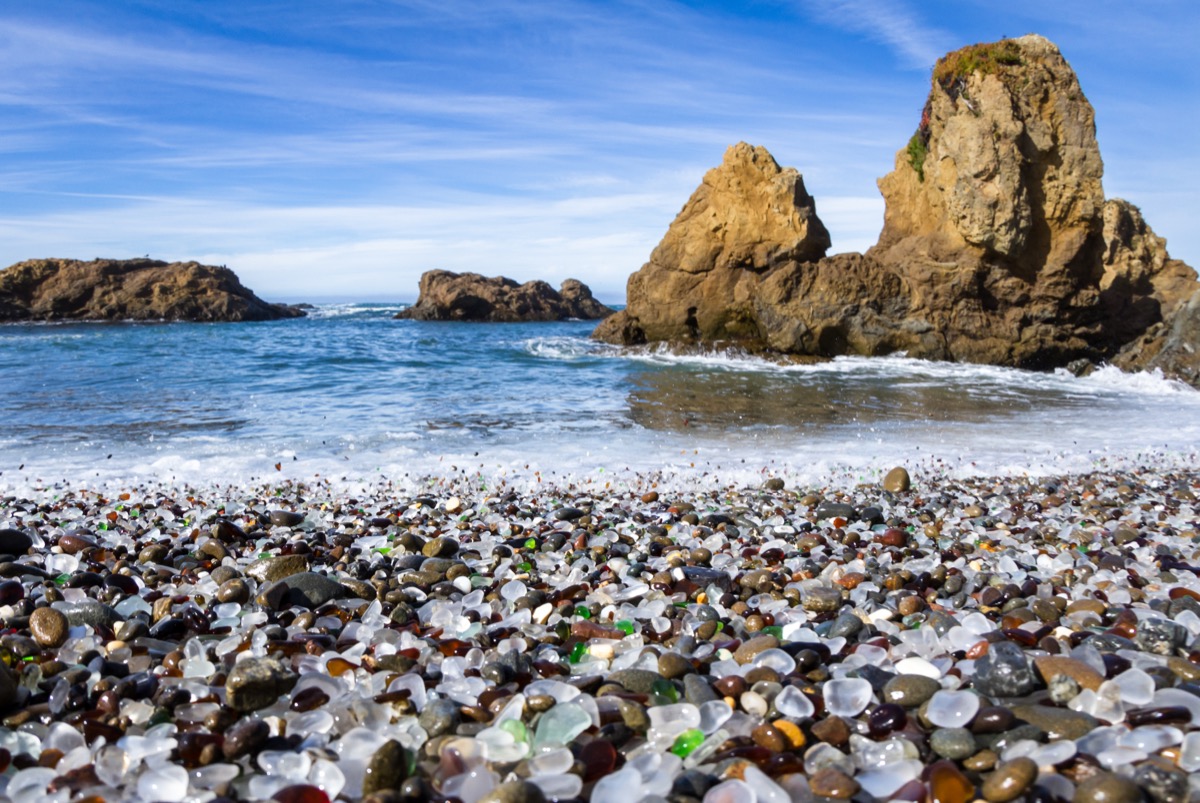
Sea glass isn’t a super uncommon sight, but have you ever seen a shore carpeted entirely in smooth, colorful glass? Fort Bragg’s MacKerricher State Park is home to one such beach. While it’s a pretty sight today, Glass Beach is actually the result of decades of discarded trash as the coastline was used as a dump in the early 20th century. Cleanup didn’t start until the 1960s, but by then, weather and unwavering Pacific waves transformed the disposed bottles and appliances into polished sea glass.
16
Sculptured Rocks Natural Area, New Hampshire
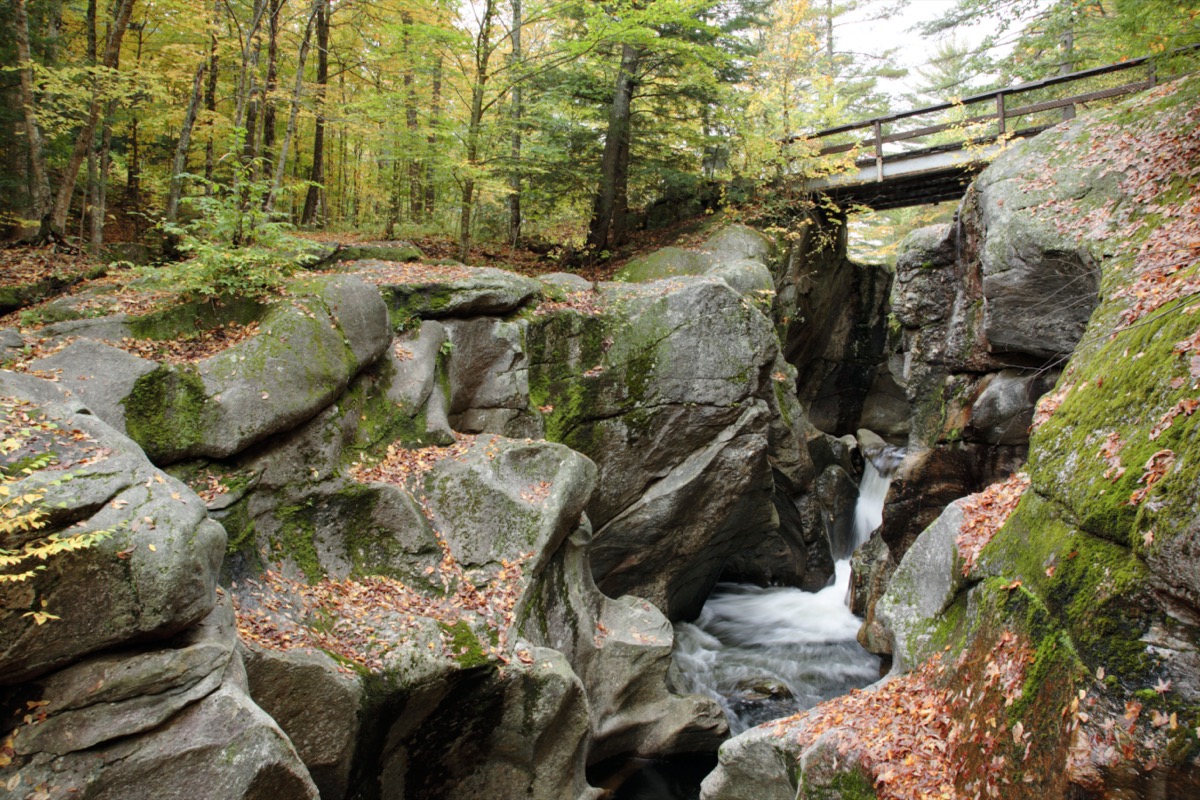
We’re confident you can infer what this Groton landmark is known for. The 272-acre wonder is defined by its narrow, ice age-carved formations, which stretch out along the Cockermouth River. The Newfound Lake tributary also makes a great place to swim if you can handle the frigid New Hampshire water.
17
Salton Sea, California
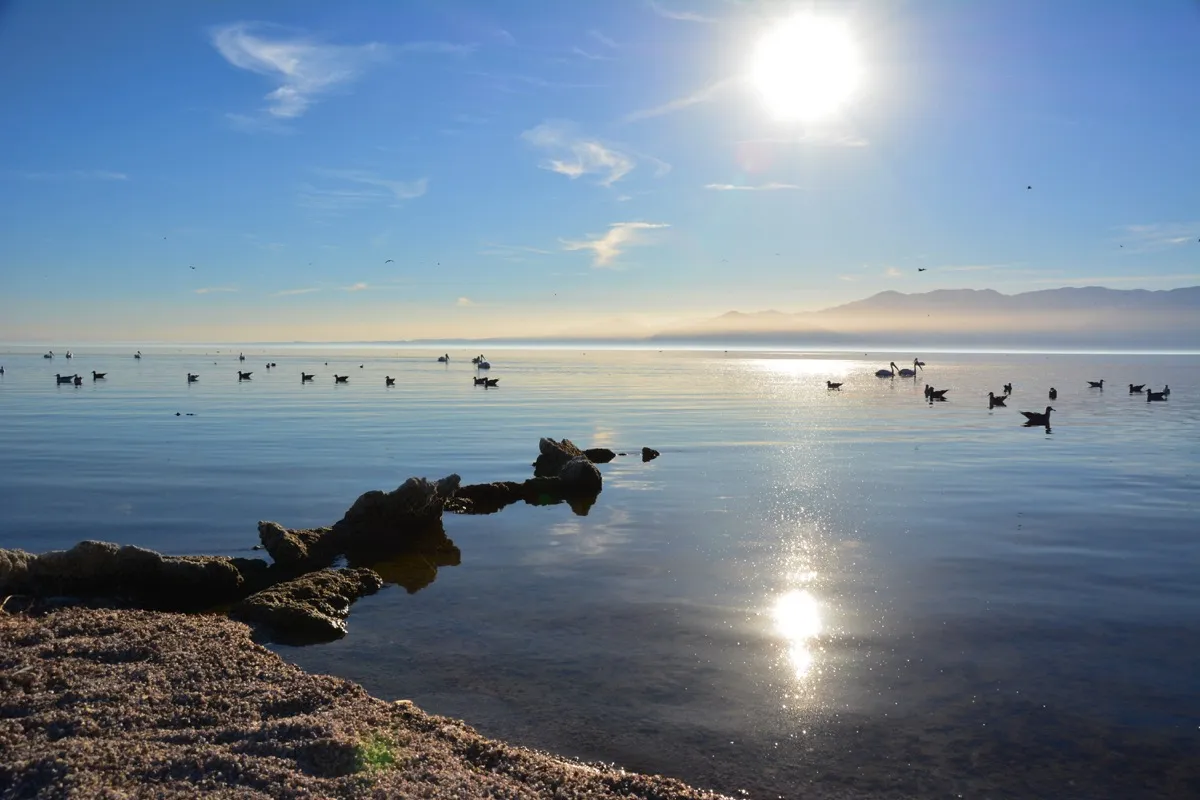
California’s Salton Sea may be more than 343 square miles in size, but the shallow saline lake is only 43 feet deep at its maximum. The lake, which is located directly on the San Andreas Fault, is a result of flood waters from the Colorado River. As the river flooded for a full 18 months at the turn of the 20th century, its overflow rushed into Salton and created what’s now the state’s largest lake.
18
Apostle Islands National Lakeshore Ice Caves, Wisconsin
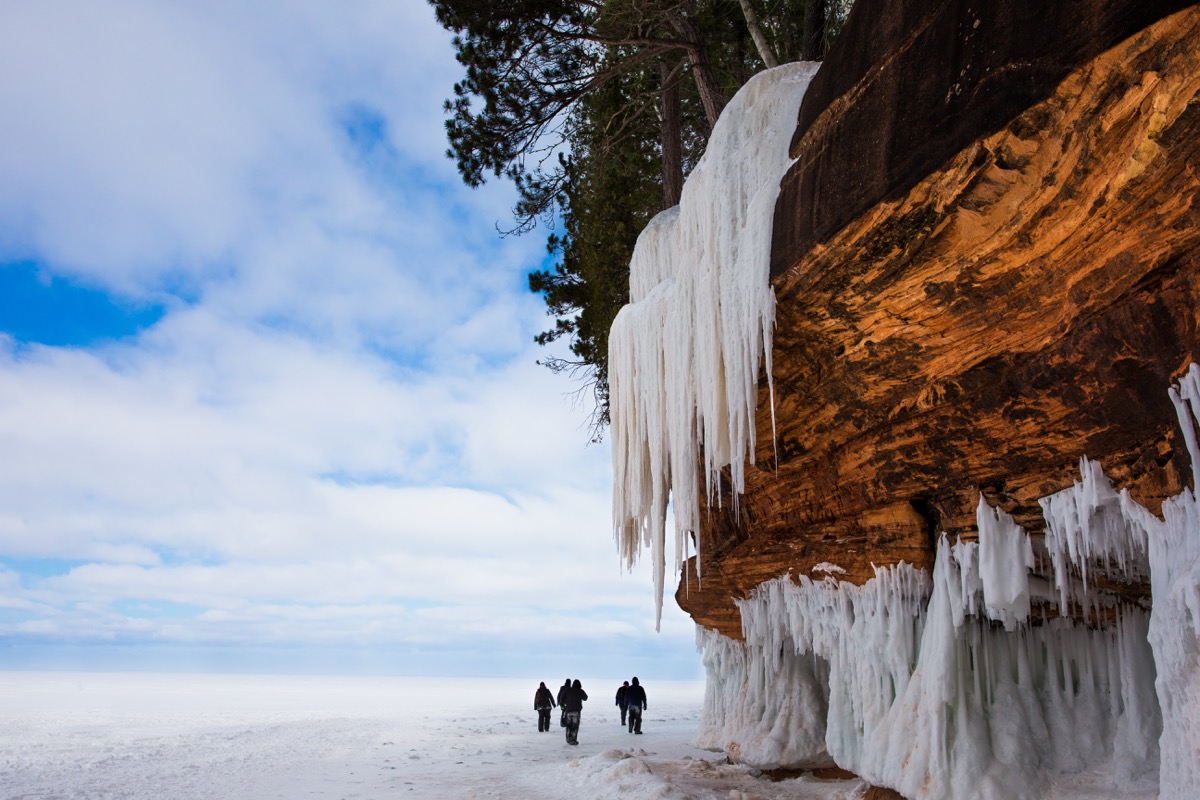
When Lake Superior freezes over between February and March, the 600-million-year-old ice caves at Wisconsin’s Apostle Island National Lakeshore are open for business. The fleeting attraction—known for its honeycombed passageways, lengthy icicles, and clear ice floors (through which you can see the bottom of the lake)—is formed by waves that splash against the area’s sandstone sea caves.
19
Intermittent Spring, Wyoming
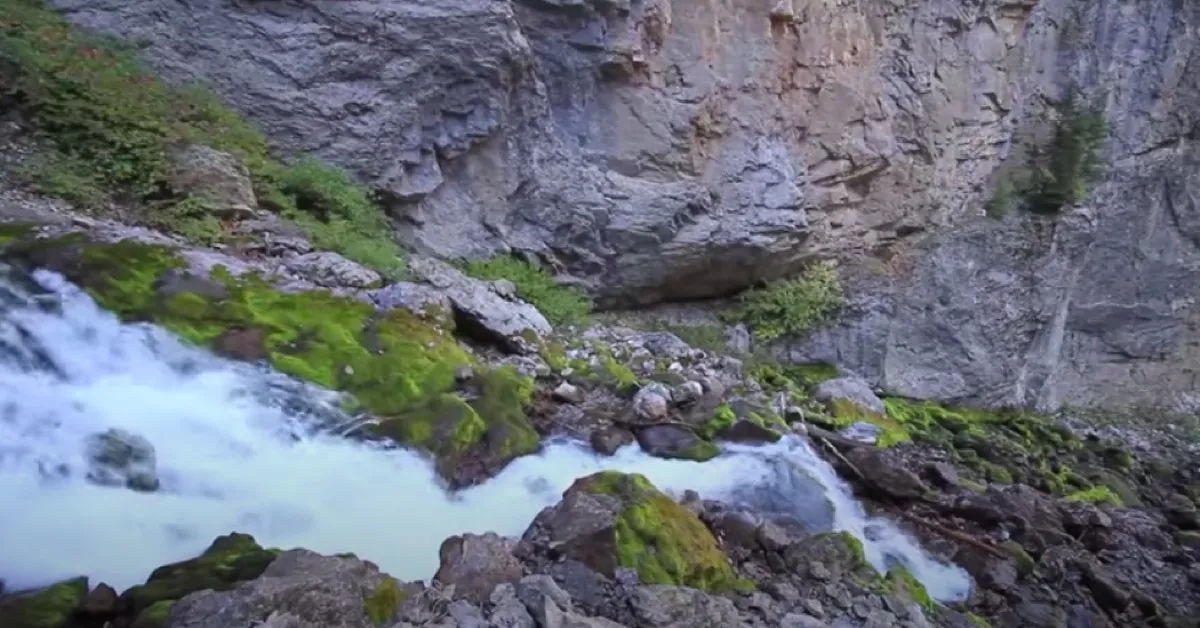
If you’ve never heard of a rhythmic spring before, you’re likely in good company. Star Valley’s Intermittent Spring (also known as Periodic Spring) is one of only three such sites in the world. The spring is said to “breathe,” as every August to May, its water flows for 18 straight minutes before sputtering to a stop for another 15 or so minutes.
20
Ringing Rocks, Montana
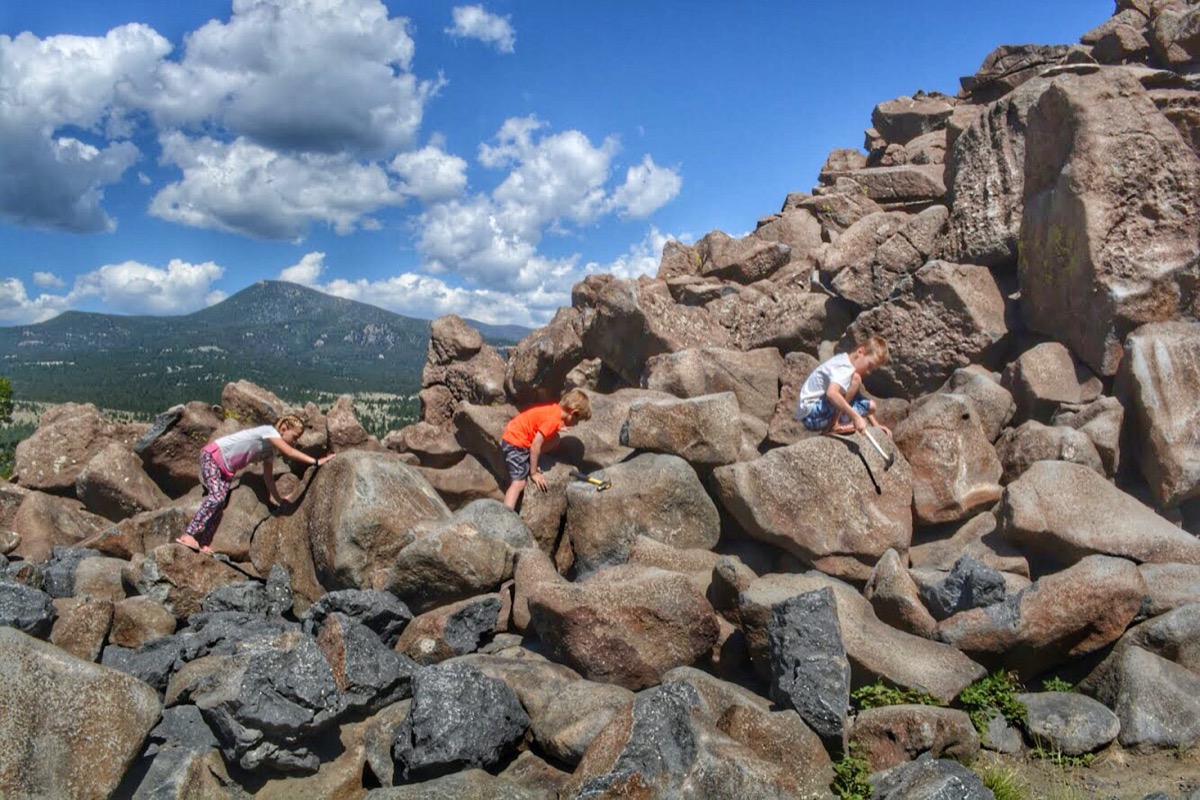
Most attractions don’t advise you to bring a hammer along on your adventure, but Montana’s Ringing Rocks is the exception. Here, a deceivingly ordinary pile of boulders is transformed into a chorus of bells with just a slight tap. While the phenomenon is loosely linked to erosion patterns and symmetry, there’s no definite answer as to why the resonance really happens. One thing is for sure, though: remove a rock and the entire pile won’t ring.
21
Devil’s Gulch, South Dakota
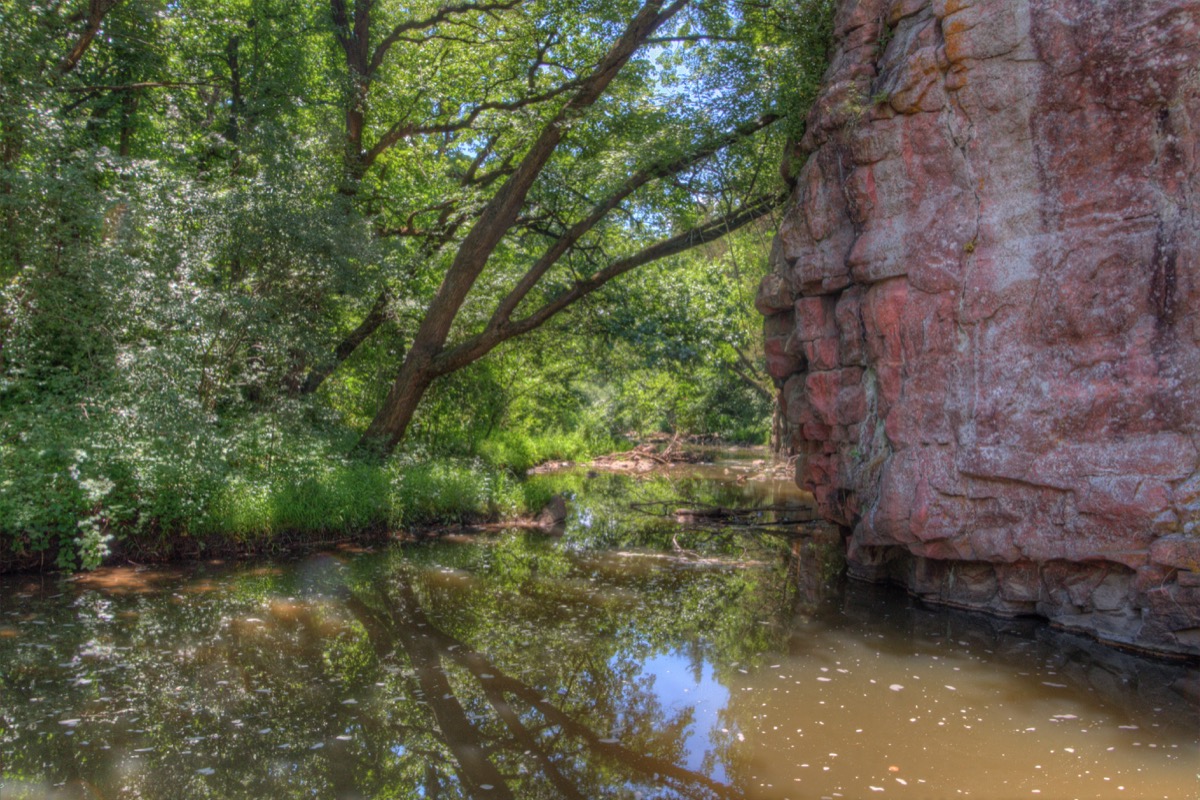
Local Garretson lore has it that Devil’s Gulch—an 18-foot chasm of quartzite rock—is the site of one of Jesse James’ most daring escapes. Following a failed bank robbery attempt in the fall of 1876, James is said to have jumped across the ravine on horseback, evading his captors and leading them on a two-week chase. Whether or not that’s true is beside the point, though, as the natural wonder—which can now be traversed by footbridge—is a sight to see.
22
Caverns of Sonora, Texas
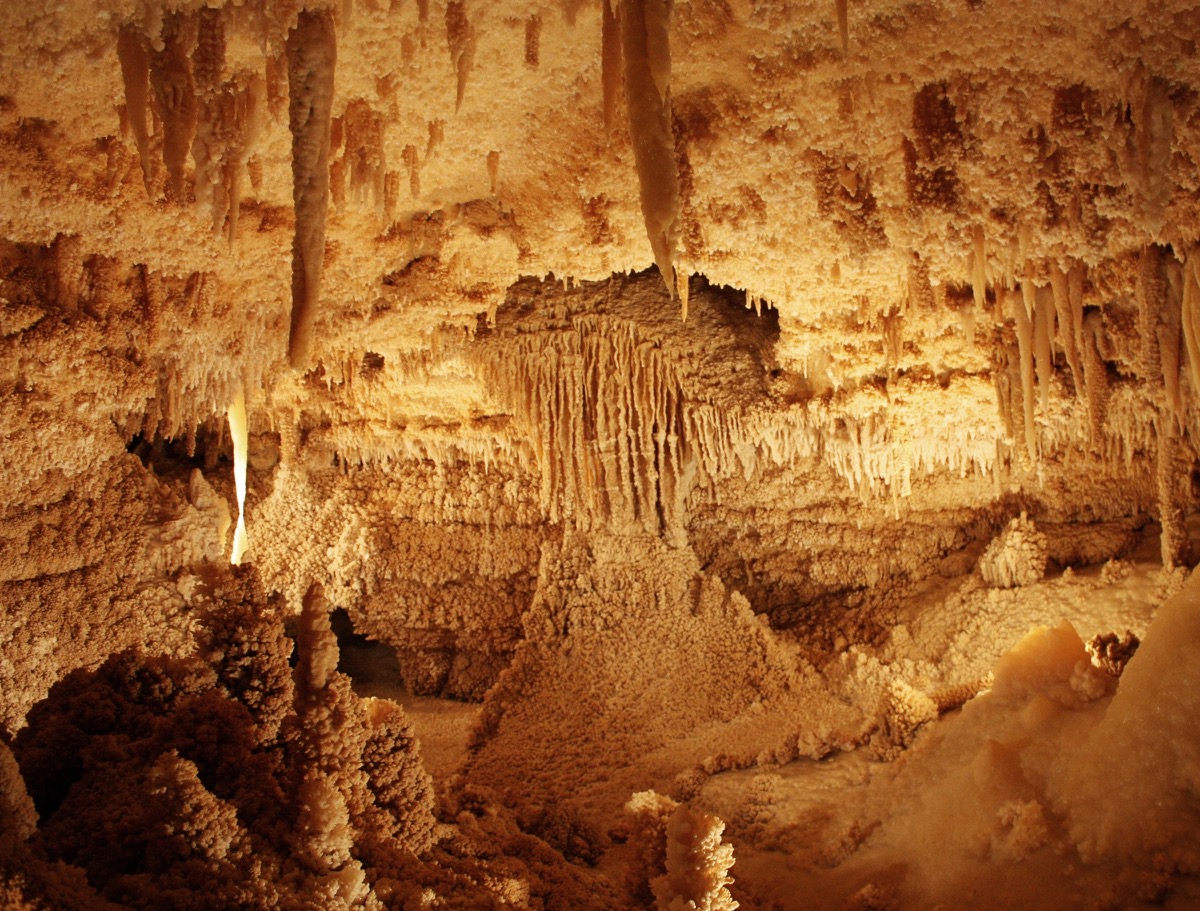
If you’ve ever grown your own crystals at school or home, then you have an idea of what the Caverns of Sonora look like—just on a minute scale. The 100-million-year-old limestone cave—which lies where Texas Hill Country meets the Chihuahuan Desert—is chock full of rare calcite crystal formations. And for more surprising spots, check out This Is the Most Underrated Travel Destination in Your State.
23
Bash Bish Falls, Massachusetts
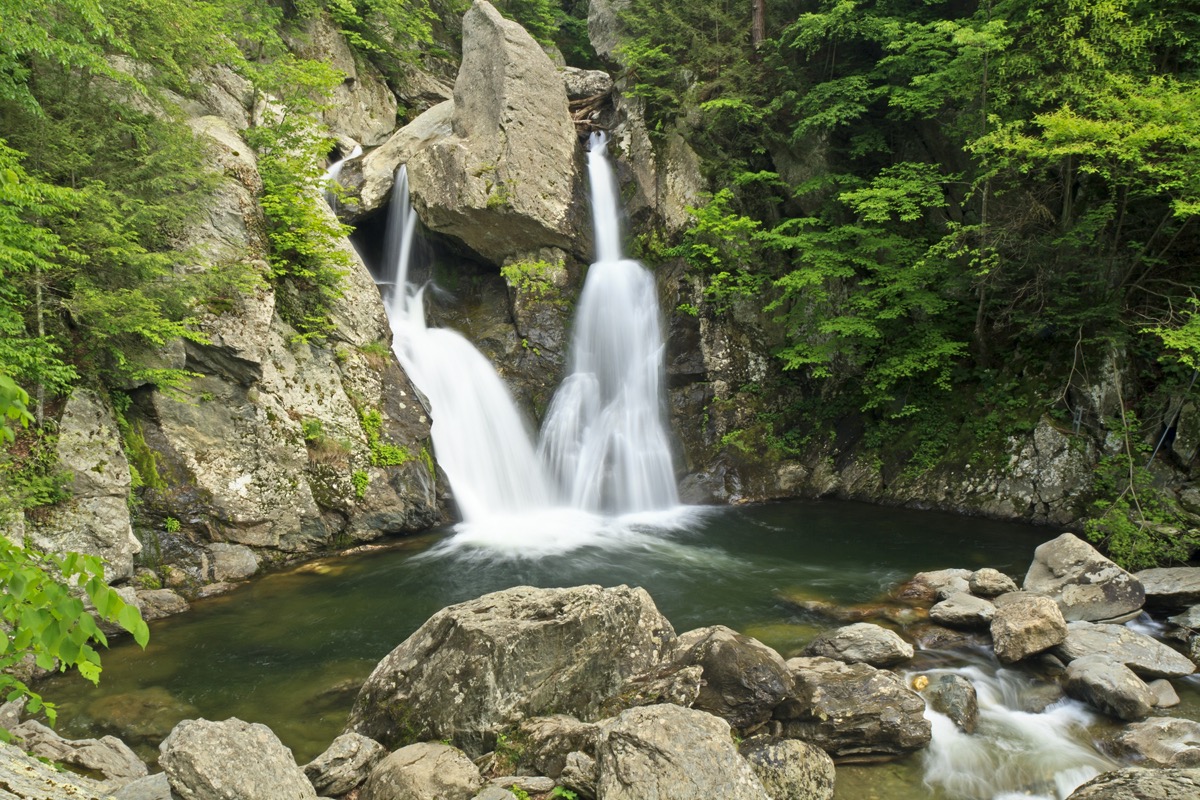
Massachusetts’ scenic Bish Bash Falls may look about as far removed from New York City as one can get, but believe it or not, the two are connected by the same water. It all starts with a Mount Washington spring that flows from New Hampshire down through Massachusetts’ highest single-drop waterfall, and then all the way through to New York’s Hudson River.